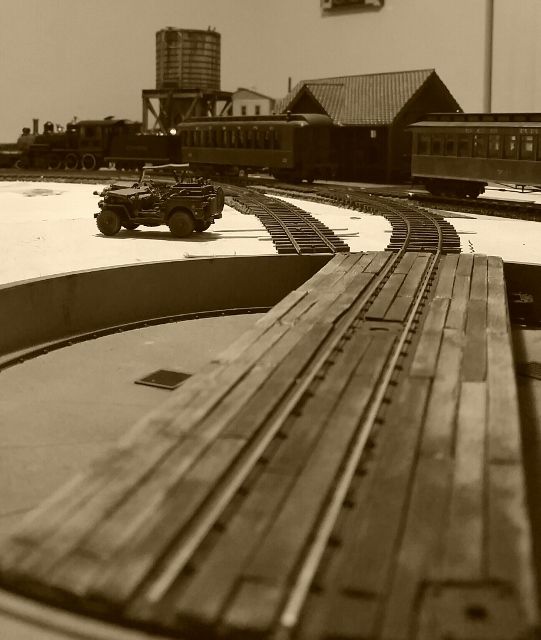British modellers were mentioned a few posts back. That'll be me, then...
We live in a Country 1/38th the size of the USA, but with 1/6th the population - oh yes we know all about trying to model in small spaces!! In fact this thread has been an interesting read, as it helps me see the "mindset" of most US modellers.
In general, you guys think in terms of modelling a Route, & taking a train along it; we tend to model a Place, & run several trains through it. This works with British outline as our prototype railways run a pretty intense, passenger-oriented service, & our Station designs, with raised platforms etc, take up a fair bit of space to model.
But those of us interested in American trains have found ways to do so along our way of thinking, & involving a certain amount of compromise. None of us have room for multi-deck, basement empires (very few UK houses actually have basements) so we don't often model multi-engine trans-continental freights, unless it's in N gauge, and in relation to the Question of this thread, I'd imagine that if that's what you want to model, then few of you even in the US would have room for 2-rail O.
But the saviour for many of us in the UK has been to follow smaller Railroads, & the Short Line scene in particular. That holds a great fascination for us as we don't have a direct equivalent in the UK - in fact rail freight in such a small Country is quite limited; usually block (unit) trains of bulk goods, steel, coal etc & containers. Most goods go by road.... I digress.
By modelling railroads based on shorter trains and doing just one location, feeding trains from hidden staging, that's how we manage to model US-outline in small spaces. I'm building a "small" 2-rail O layout in my loft (attic) in a space of 17ft by 8ft, using 36in radius curves, but #6 switches. All my diesels up to Atlas SD40 can take the curves. Ironically British O scale trains can't really use such tight curves - the traditional couplings of 3-link shackle and buffers can't cope. Your Railroading Forefathers knew what they were doing when they standardised on buckeye couplers way back when!!
Previously I have built a Switching layout in 12ft x 2ft. Staging was 4ft of that length. Trains were just a loco & 2 cars, but it was great fun and entertained lots of people at two local Model Railway Exhibitions I took it to. I posted a thread about it on here. Search for "Portway Center".
I contend then, that anyone who has room for 3-rail O, has room for 2-rail Scale. You just have to adjust your expectations as to what you actually want to do in that space. As I have said before - a lack of space is merely a challenge to the imagination...!!






